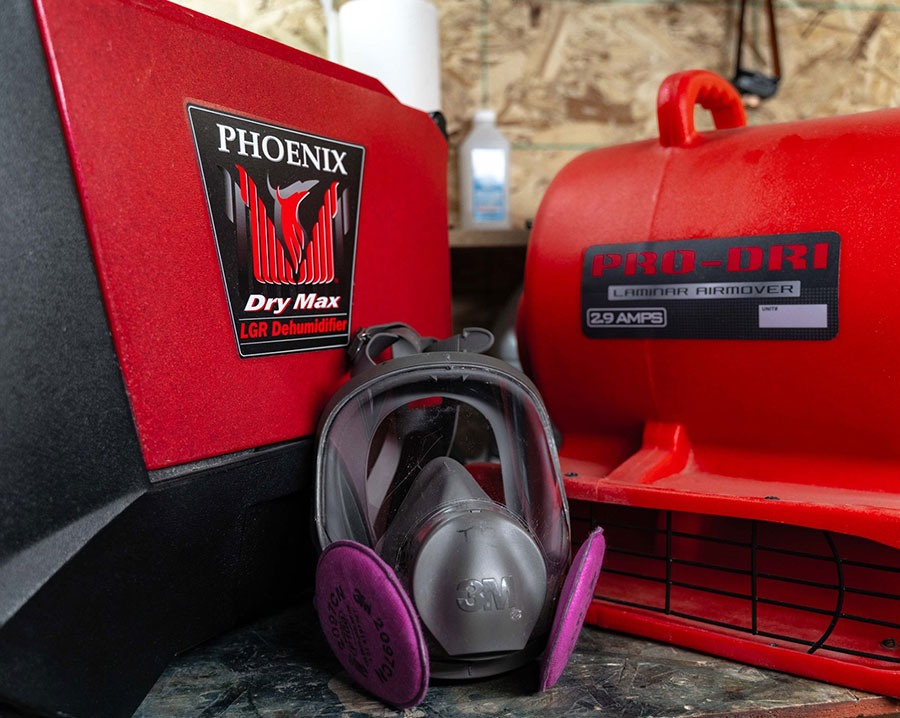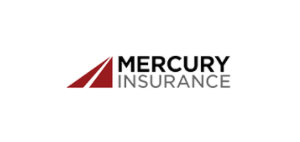Did you know that floods are the most common natural disasters in the United States, affecting millions of people each year?
When faced with the aftermath of a flood, it is crucial to take swift and effective action to dry out your house and prevent further damage. This article will guide you through the process of flood recovery, including water removal techniques, moisture control, mold prevention, and long-term humidity management. By following these steps, you can restore your home after a flood and ensure a safe living environment for you and your loved ones.
Key Takeaways:
- Take immediate steps to assess the severity of the flood, turn off utilities, contact insurance, and ensure personal safety during the cleanup process.
- Start the drying out process by using water extraction techniques such as pumps, wet/dry vacuums, and dehumidifiers.
- Sort and discard water-damaged items based on salvageability and safety considerations.
- Prevent mold growth and remediate any existing mold using proper cleaning techniques and thorough drying.
- Maintain long-term humidity control in your home through the use of dehumidifiers, ventilation, and regular monitoring of moisture levels.
Immediate Steps to Take Following a Flood
After a flood, it is crucial to prioritize safety and take immediate action. Follow these essential steps to ensure your well-being and begin the flood recovery process:
- Assess the severity of the flood: Evaluate the extent of the flooding in your home. If the water level is high or poses a significant risk, evacuate immediately and seek shelter in a safe location.
- Turn off utilities: Shut off the electricity, gas, and water supply to prevent further damage and potential hazards. If you are unsure how to do this safely, contact a professional.
- Contact your insurance company: Notify your insurance provider about the flood incident as soon as possible. They will guide you through the claims process and provide guidance on the necessary documentation.
- Document the damage: Take photographs or videos of the affected areas and any damaged belongings. This evidence will aid in the insurance claim process and ensure a smooth recovery.
- Ensure personal safety: Wear protective gear, such as gloves, boots, and masks, to avoid contact with potentially contaminated water and surfaces. Be cautious of electrical hazards, slippery surfaces, and structural instability.
- Begin cleanup process: Safely remove any standing water using pumps or wet/dry vacuums. Dispose of damaged items that cannot be salvaged. Thoroughly clean and disinfect surfaces to minimize health risks.
- Seek professional assistance if needed: If the flood damage is extensive or you are unsure about the necessary repairs, consider hiring a professional flood recovery service. They have the expertise and equipment to handle complex restoration tasks.
By following these immediate steps after a flood, you can mitigate further damage, ensure your safety, and lay the foundation for a successful flood recovery.
Starting the Drying Out Process
Once the immediate safety measures are addressed, it is time to begin the drying out process after a flood. Effectively removing water and controlling moisture is crucial to prevent further damage and mold growth. In this section, we will explore effective water extraction techniques and essential drying equipment that can facilitate the process.
To begin, it is important to remove excess water from the affected areas using appropriate water extraction techniques. One common method is to use pumps to remove standing water from the premises. These pumps are designed to efficiently extract large volumes of water, ensuring a quicker drying process.
For smaller areas or hard-to-reach spaces, wet/dry vacuums can be used. These versatile devices are capable of both removing water and minimizing residual moisture, making them ideal for extracting water from carpets, upholstery, and other porous materials.
In addition to water extraction, the use of dehumidifiers is crucial in effectively drying out the house. Dehumidifiers work by removing excess moisture from the air, helping to accelerate the drying process. These devices are particularly effective in enclosed spaces or basements where humidity levels tend to be higher.
Proper ventilation techniques are also essential in facilitating drying. Opening windows and doors to allow for natural airflow can help expedite the evaporation of water and reduce moisture levels. If weather conditions permit, using fans to circulate air throughout the affected areas can further enhance the drying process.
Remember, when utilizing drying equipment, it is essential to closely follow the manufacturer’s instructions and safety guidelines. This ensures optimal performance and minimizes the risk of accidents or damage to the equipment.
Sorting and Discarding Water-Damaged Items
After a flood, it is essential to assess and categorize the water-damaged items in your home. Sorting through your belongings is a crucial step towards restoring your living space. Not all possessions can be salvaged, as some may be irreparably damaged by the floodwaters. In this section, we will provide guidance on how to determine which items can be saved and which should be discarded.
The first step in sorting flooded items is to prioritize your safety. Make sure to wear protective gear, such as gloves and masks, to avoid exposure to contaminated materials. Begin by separating items into three categories: salvageable, salvageable with professional help, and unsalvageable. Salvageable items are those that can be air-dried and cleaned before reuse. Salvageable items that require professional assistance include delicate furniture, electronics, and sentimental items that are difficult to restore independently. Unsalvageable items are those that are extensively damaged or pose a health risk.
When discarding belongings after a flood, it is important to follow proper disposal guidelines based on your local regulations. Some items may contain hazardous substances or materials that require special handling. Check with your local waste management authority or environmental agency for guidance on disposing of damaged items safely.
Additionally, documenting your losses is crucial for insurance claims. Take photographs or video recordings of the damage to provide evidence for your insurance company. Make a detailed inventory of the discarded items, including descriptions and estimated values. This documentation will help facilitate the claims process and ensure that you receive appropriate compensation for your losses.
Mold Prevention and Remediation
After a flood, one of the major concerns is the potential growth of mold. Mold can cause various health risks and damage to your home if not addressed properly. It is essential to take immediate action to prevent mold growth and effectively remediate any existing mold.
The first step in mold prevention is to be aware of the signs of mold growth. These may include a musty odor, visible mold growth on surfaces, and the presence of mold-related health symptoms such as allergies, respiratory issues, or skin irritation. If you notice any of these signs, it’s important to take prompt action to address the issue.
To effectively prevent and remove mold, it is crucial to implement proper cleaning techniques. Thoroughly clean and dry all affected areas using appropriate cleaning agents and equipment. Pay close attention to hidden areas such as behind walls or under flooring, as mold can easily grow in these spaces.
It is also recommended to use antimicrobial agents during the cleaning process. These agents can help kill any existing mold spores and inhibit future mold growth. Be sure to follow the instructions provided by the manufacturer when using these products.
In addition to cleaning, thorough drying is essential to prevent mold recurrence. Mold thrives in moist environments, so it’s crucial to remove all sources of moisture. Utilize dehumidifiers and fans to aid in the drying process. Proper ventilation is also important to allow air circulation and prevent the buildup of humidity.
Regular monitoring and maintenance are key to long-term mold prevention. Keep an eye out for any signs of moisture or mold growth in your home, especially in areas prone to water damage. Act promptly if you notice any issues to prevent the spread of mold and mitigate potential health risks.
By taking proactive measures in mold prevention and remediation after a flood, you can ensure the safety and well-being of your home and its occupants. Remember to prioritize safety during the process and seek professional assistance if needed.
Long-Term Humidity Control in Your Home
Even after the initial drying out process, it is important to maintain optimal humidity levels in your home to prevent further damage and mold growth. One of the most effective methods of humidity control after a flood is the use of dehumidifiers. These devices remove excess moisture from the air, helping to maintain a healthy humidity level and prevent the growth of mold and mildew.
In addition to using dehumidifiers, proper ventilation is essential for moisture management. Make sure to open windows and doors to promote air circulation and facilitate the evaporation of any remaining moisture. Use fans or air movers to enhance airflow in areas that are prone to high humidity, such as basements or crawl spaces.
Regularly monitoring moisture levels in your home is another crucial aspect of long-term humidity control. Invest in a moisture meter to regularly check the humidity levels in different areas of your home, especially in areas that were affected by the flood. This will allow you to take prompt action if humidity levels rise, preventing moisture damage and mold growth.
Remember, preventing moisture damage is an ongoing process. It’s important to continue implementing humidity control measures even after the initial flood recovery is complete. By maintaining optimal humidity levels and preventing excess moisture in your home, you can safeguard your property and ensure a healthy living environment for you and your family.
Professional Services vs. DIY Flood Recovery
When it comes to recovering from a flood, homeowners are faced with the decision of whether to hire professional flood recovery services or tackle the restoration process themselves. Each approach has its own advantages and considerations, which should be carefully evaluated to make an informed decision.
Professional flood recovery services offer several benefits. First and foremost, hiring experts in flood restoration provides homeowners with peace of mind knowing that their property is in capable hands. These professionals have the necessary knowledge, experience, and equipment to handle the various aspects of flood recovery efficiently and effectively.
Additionally, professional services can save homeowners valuable time and effort. The process of restoring a home after a flood can be complex and time-consuming, requiring extensive drying, cleaning, and mold prevention measures. By hiring professionals, homeowners can focus on other priorities and responsibilities while the experts handle the restoration process.
On the other hand, some homeowners may choose the DIY approach for various reasons. One of the main considerations is cost. Hiring professional flood recovery services can be expensive, especially for homeowners on a tight budget. By opting for a DIY restoration, homeowners can potentially save money by performing the necessary tasks themselves.
Another advantage of DIY flood recovery is the control and involvement homeowners have in the restoration process. They can personally oversee every step, ensuring that their property is restored to their satisfaction. DIY enthusiasts may also find the restoration process as an opportunity for hands-on learning and skill development.
However, it is crucial to consider the potential risks and limitations of a DIY approach. Without the proper expertise and equipment, homeowners may unintentionally cause further damage or overlook essential steps, leading to long-term problems such as mold growth or structural issues. DIY restoration also requires a significant amount of time, effort, and research to ensure the appropriate techniques and safety precautions are followed.
In conclusion, the choice between professional flood recovery services and a DIY approach depends on various factors, including budget, expertise, time availability, and personal preference. Understanding the advantages and considerations of each option is essential in making an informed decision that best suits the homeowner’s needs and circumstances. Regardless of the chosen path, ensuring prompt and thorough flood recovery is crucial for the safety and well-being of the homeowners and their property.
Additional Considerations for Flood Recovery
Beyond the primary flood recovery steps, there are additional considerations to address. This section will cover guidance on filing insurance claims, documenting flood damage for insurance purposes, and potential assistance programs available for homeowners recovering from a flood.
When dealing with a flood, it’s important to understand the process of filing insurance claims for flood damage. Contact your insurance provider as soon as possible to begin the claims process. Make sure to document all the damage for your claim by taking photographs or videos of the affected areas in your home. This evidence will be crucial to support your claim and ensure you receive the appropriate compensation for the damage incurred.
Documenting flood damage for insurance purposes involves capturing the extent of the damage to your property and belongings. Take detailed photographs of each affected area and item, highlighting the damage caused by the flood. Keep a record of any repairs or replacements made, as well as any receipts related to the restoration process. This documentation will serve as proof of the damage and help support your insurance claim.
In addition to insurance claims, homeowners may also have access to assistance programs for flood recovery. These programs can provide financial aid, resources, and guidance to help homeowners in their recovery efforts. Research and inquire about local, state, and federal assistance programs that may be available to you. These programs can offer valuable support during the challenging process of recovering from a flood.
When dealing with the aftermath of a flood, it’s important to consider these additional aspects of flood recovery. By filing insurance claims, documenting flood damage, and exploring available assistance programs, homeowners can work towards a comprehensive and successful recovery process.
Conclusion
In conclusion, successfully recovering from a flood and drying out your house requires a systematic approach and careful consideration of key steps and considerations.
First and foremost, prioritize safety throughout the entire process. Assess the severity of the flood, turn off utilities to prevent further damage or accidents, and ensure personal safety during cleanup efforts.
Next, focus on water removal and moisture control. Utilize effective water extraction techniques, such as pumps and wet/dry vacuums, and consider using dehumidifiers to expedite the drying process. This will help prevent further damage and reduce the risk of mold growth.
To minimize the potential health risks associated with mold growth, make sure to properly sort and discard water-damaged items. Salvageable belongings should be thoroughly cleaned and disinfected, while contaminated items should be safely handled and documented for insurance purposes.
It’s important to remember that long-term humidity control is crucial in preventing moisture damage and mold recurrence. Use dehumidifiers, maintain proper ventilation, and regularly monitor moisture levels in your home to create a healthy and safe living environment.
While many homeowners may choose to handle flood recovery themselves, seeking professional assistance is often a wise decision. Professionals have the expertise and specialized equipment to ensure a thorough and efficient restoration process, saving you time and potentially minimizing risks.
In conclusion, be proactive and act promptly when faced with a flood. By focusing on safety, water removal, mold prevention, and long-term moisture control, you can successfully recover from a flood and restore your home to a safe and livable condition.




















